Giochi dell'Oca e di percorso
(by Luigi Ciompi & Adrian Seville)
(by Luigi Ciompi & Adrian Seville)

|
Giochi dell'Oca e di percorso
(by Luigi Ciompi & Adrian Seville) |

|
 |

Torna alla ricerca giochi (back to game search) |
 |
| Errand (The) Boy | ||
 |
Versione stampabile
 |
Invia una segnalazione

|
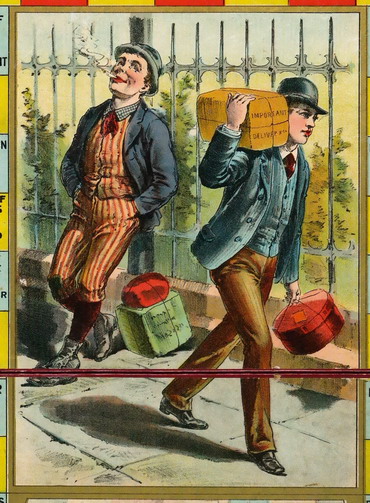 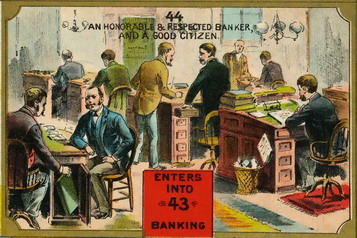 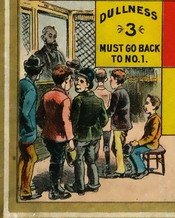 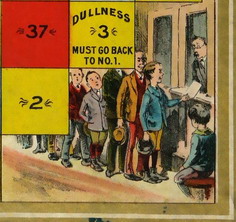 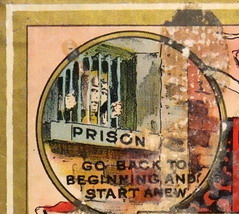  |
primo autore: | Anonimo |
| secondo autore: | McLoughlin Bros. | |
| anno: | 1891 | |
| luogo: |
USA - New York |
|
| periodo: | XIX secolo (4°/4) | |
| percorso: | Percorso doppio di 44 caselle numerate | |
| materiale: | carta incollata su cartone (paper) (papier) | |
| dimensioni: | 500X260 | |
| stampa: | Cromolitografia | |
| luogo acquisto: | ||
| data acquisto: | ||
| dimensioni confezione: | ||
| numero caselle: | 44 | |
| categoria: | Vita umana, attualità, lavoro e tempo libero | |
| tipo di gioco: | Gioco di percorso | |
| editore: | McLoughlin Bros. | |
| stampatore: | McLoughlin Bros | |
| proprietario: | Collezione A. Seville | |
| autore delle foto: | A. Seville | |
| numero di catalogo: | 1034 | |
| descrizione: |
Gioco con doppio percorso di 44 caselle. La McLoughlin Brothers fondata nel 1858 è forse la capostipite delle aziende di giochi americani. Produsse alcuni tra i più bei giochi mai pubblicati negli Stati Uniti, raggiungendo il picco negli anni Ottanta e Novanta dell'Ottocento prima di essere acquisita da Milton Bradley nel 1920. Questo gioco mostra la scalata sociale di in umile Fattorino che di miglioramento in miglioramento arriva alla casella 43 e poi vince il gioco. La partenza è doppia in modo che il giocatore possa cominciare da uno qualsiasi dei lati del tavoliere. L'ascesa sociale è costituita da molte tappe nelle quali il fattorino diventa dapprima Commesso (casella 22) poi Caporeparto (casella 24), Responsabile (casella 30), Socio (casella 34), Dirigente (casella 38), e infine guadagna 1.000.000 di dollari (casella 39). Ritirarsi dal settore commerciale con 5.000.000 di dollari (casella 41) è l'obiettivo finale per diventare banchiere alla casella 44. L'avanzata può essere più veloce se si finisce su caselle quali Onestà, Gentilezza e Precisione mentre difetti come la Pigrizia o la Disattenzione possono rallentarla. Il principale imprevisto è finire in cella per Furto (casella 35): per uscire di prigione bisogna totalizzare 5 con i dadi ma si è comunque obbligati a ripartire dall'inizio. REGOLE: nelle caselle. CASELLE: con didascalia. REFERENZA 1 Game 71: The Errand Boy Game of the Errand Boy. New York: McLoughlin Bros., 1891. Chromolithograph on folding two-panel board, with red paper backing, 50 x 26 cm. Refs.: Ciompi/Seville 1034; Whitehill, pp. 32 and 103. This colorful game is by McLoughlin Bros., a firm active from 1828 to 1920 and best known for their vast output of children’s books that make innovative use of color printing technology. The game charts the progress of the humble Errand Boy to becoming a Banker at space 43 and winning the game. The initial part of the track is doubled, so that the player may start on either side of the board; the two sides are identical, so this feature is purely cosmetic. There are several stages in the progress, as the Boy successively becomes a salesman (space 22), head of department (space 24), manager (space 30), admitted to the firm (space 34), and head of the firm (space 38), before attaining wealth of $1,000,000 (space 39). ”Retiring from mercantile business” (space 41) with $5,000,000 is the ultimate achievement and enough to become ”an honorable and respected banker and a good citizen” at the winning space 43. The progress can be hastened by landing on spaces such as honesty, politeness and accuracy; whereas faults such as laziness, or inattention will set you back or slow you down. The main hazard is being sent to prison for theft (space 18) or embezzlement (space 36); it is necessary to spin 5 to get out of prison and even then you must start again. The main interest in the game today is in its positive attitude to banking as a clear social good! (Adrian Seville) Exhibitions: - "The Royal Game of the Goose four hundred years of printed Board Games". Exhibition at the Grolier Club, February 23 - May 14, 2016 (Prof. Adrian Seville). |
|
| bibliografia: |
1) SEVILLE, Adrian: "The Royal Game of the Goose four hundred years of printed Board Games". Catalogue of an Exhibition at the Grolier Club, February 23 - May 14, 2016. 2) SEVILLE, Adrian: "L'arte dei giochi da tavolo. Oltre un secolo di storia e divertimento dalla fine del Settecento all'inizio del Novecento." Edizioni White Star, 2019. |
|
Vai alla ricerca giochi Vai all'elenco autori